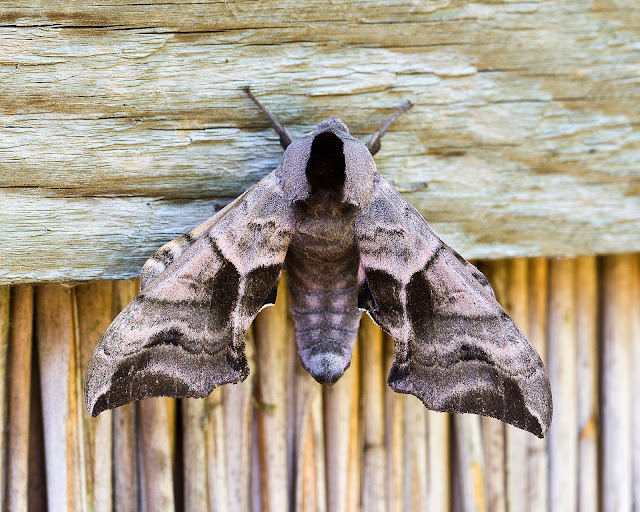The race of Swallowtails that occur in Britain (Papilio machaon Britannicus) is one of the rarest and most beautiful butterflies in the world. It is endemic to this country and exists in just a few sites in Norfolk.
Being our only endemic species, I had decided to keep it to the last, in my quest to see all the UK butterflies, a total of fifty nine in all. Perhaps not a good idea, the first fifty eight took me about eighteen months but then I had to wait a further six months for the Swallowtails to emerge. Monday came, the conditions looked right and so I set off for Strumpshaw Fen just east of Norwich eager to complete the challenge.
Well, I saw it, but it wasn't really the event that I had been looking forward to. The weather was cooler than predicted and I only saw two Swallowtails all day. The first disappeared high over the trees probably going to roost until it warmed up. The second was making regular visits to the small garden by the visitors centre happily nectaring on the plants. Great, except that I had to share it with about a dozen other people - a butterfly twitch.
 |
| Swallowtail in the nectar Garden - I think the flower is Dames Violet |
 |
| Not easy to photograph on a bright white flower |
I walked around the meadow and the Fen Trail and made regular visits to the "Doctors Garden" but I could not find any other specimens.
By three o'clock it had cooled even further and there was no real chance of seeing any more Swallowtails. I headed off for the three hour drive home, happy to have my final butterfly but a bit disappointed by the overall event.
Fortunately my birding buddy Dave was keen to see a Norfolk Hawker Dragonfly so Thursday we made an early start and by 5am we were on the road back to Strumpshaw to see the dragonfly and hopefully a few more Swallowtails.
It was overcast and cool when we arrived but by eleven o'clock the sun was out, the temperature rose rapidly and within a few minutes the Swallowtails were on the wing. As we approached the "Doctors Garden", the first one came flying in to nectar on the flowers in the border and within a few minutes we had four to photograph.
Getting a picture is easy. They take no notice of people or cameras but they will head up into the trees to roost if the temperature drops.
I am happy with the pictures but they do not really do justice to the butterfly. They have a wingspan of 6.5 to 7.5 centimetres, a slow fluttery wing beat, and a presence that cannot really be captured in a picture. If you get a chance go and see them.
Perhaps the other disappointment was that we could only capture pictures of them nectaring on garden flowers. We saw a number of others around the fen footpaths but they were all flying through. It would have been nice to get them on the the wild flowers growing on the fen or perhaps on Milk Parsley the caterpillar food plant that the species relies on.
Other butterflies around the fen were Brimstones, various whites, a Brown Argus, a couple of common blues and a lot of very tatty Painted Ladies.
 |
| Brimstone |
 |
| Brown Argus |
There were three bonuses from the day. The first, Dave heard a couple of Grasshopper Warblers reeling away and after some effort he managed to locate them. I haven't seen one for a couple of year so this was a great find. I wasn't much help in locating them as their song is well above my hearing range.
The second, was sight of some great moths, courtesy of the Strumpshaw Fen Moth trap. The trap had been emptied early in the morning and the moths put out on the fencing for people to see. We must have walked past them four or five times without noticing them but when finally tipped off to their presence, at about four o'clock in the afternoon, we went back for a look. I was surprised that they were still there. I could have done with more light but these are better record shots than I had at the start of the day.
 |
| Elephant Hawkmoth |
 |
| Eyed Hawkmoth - unfortunately not showing its eyes. |
 |
| Poplar Hawkmoth |
 |
| A second Poplar Hawkmoth |
Our third bonus was that we met Mick Davis wandering around the meadow looking for dragonflies. I haven't seen him since his move up to Norfolk but he seems too be enjoying life up there and he was his usual source of information and helpful detail. A great loss to the Sussex birding scene.
A much better day with the Swallowtails, some good moths and I haven't even mentioned Dragonflies yet. They will be appearing in the next blog.






No comments:
Post a Comment